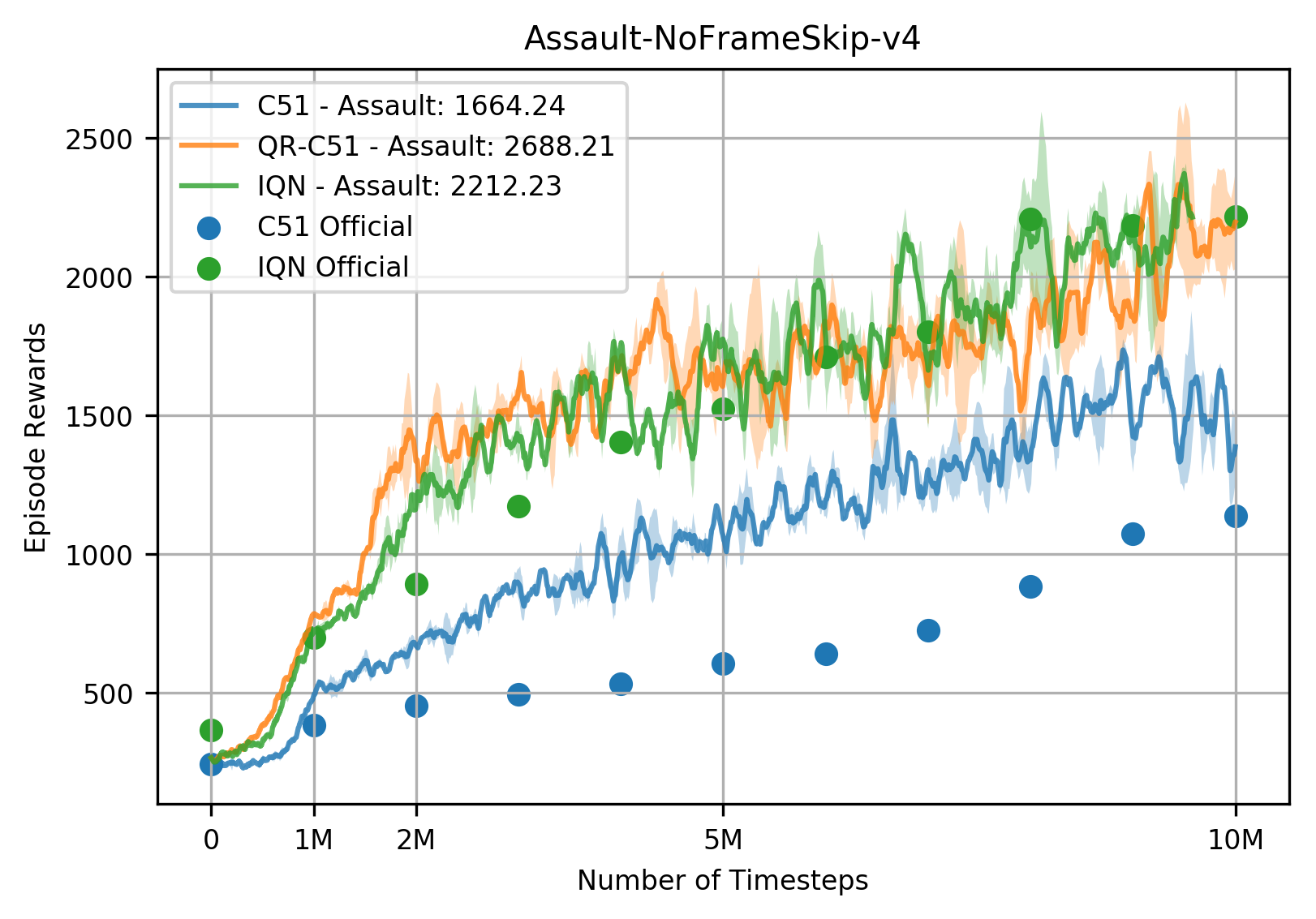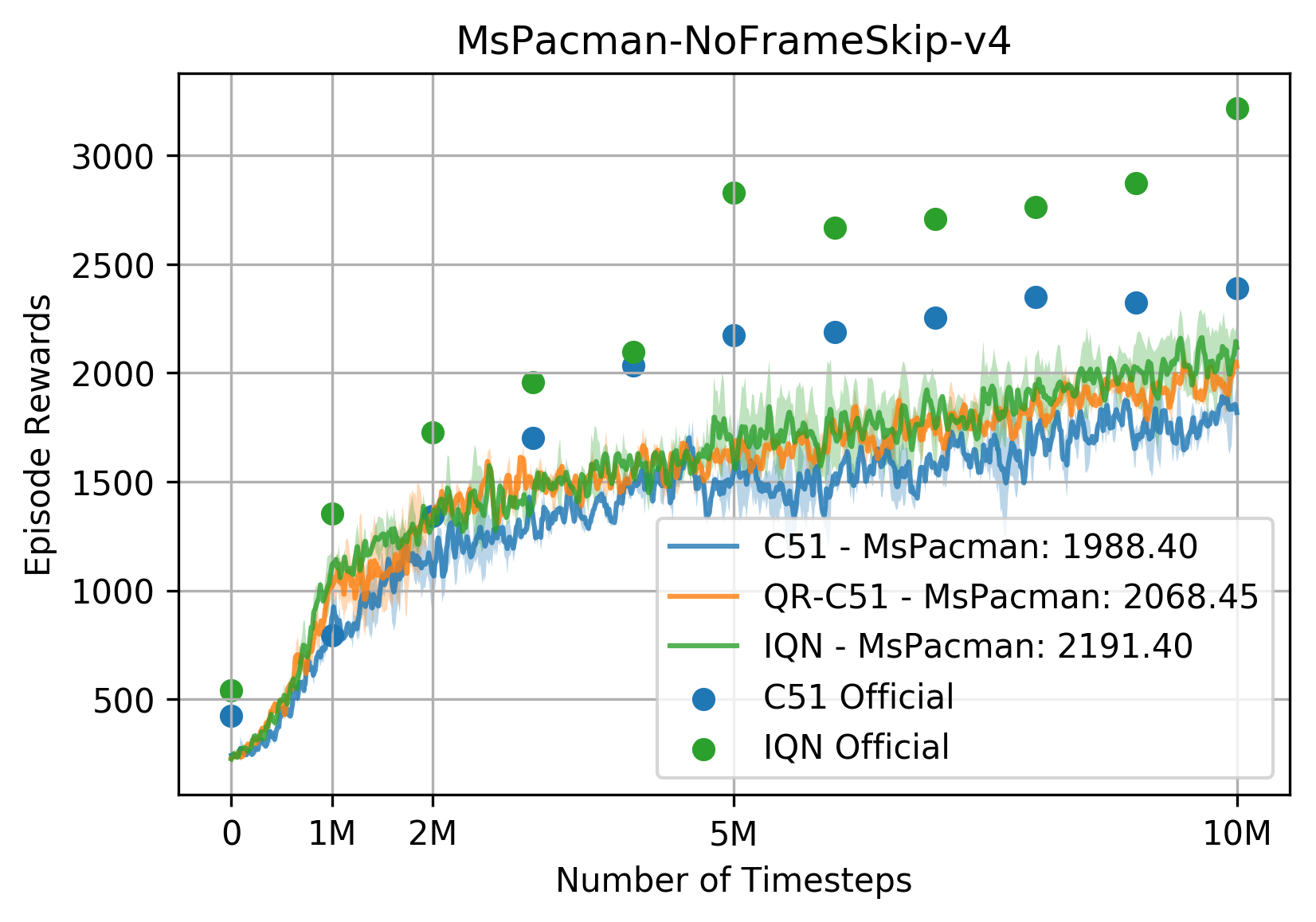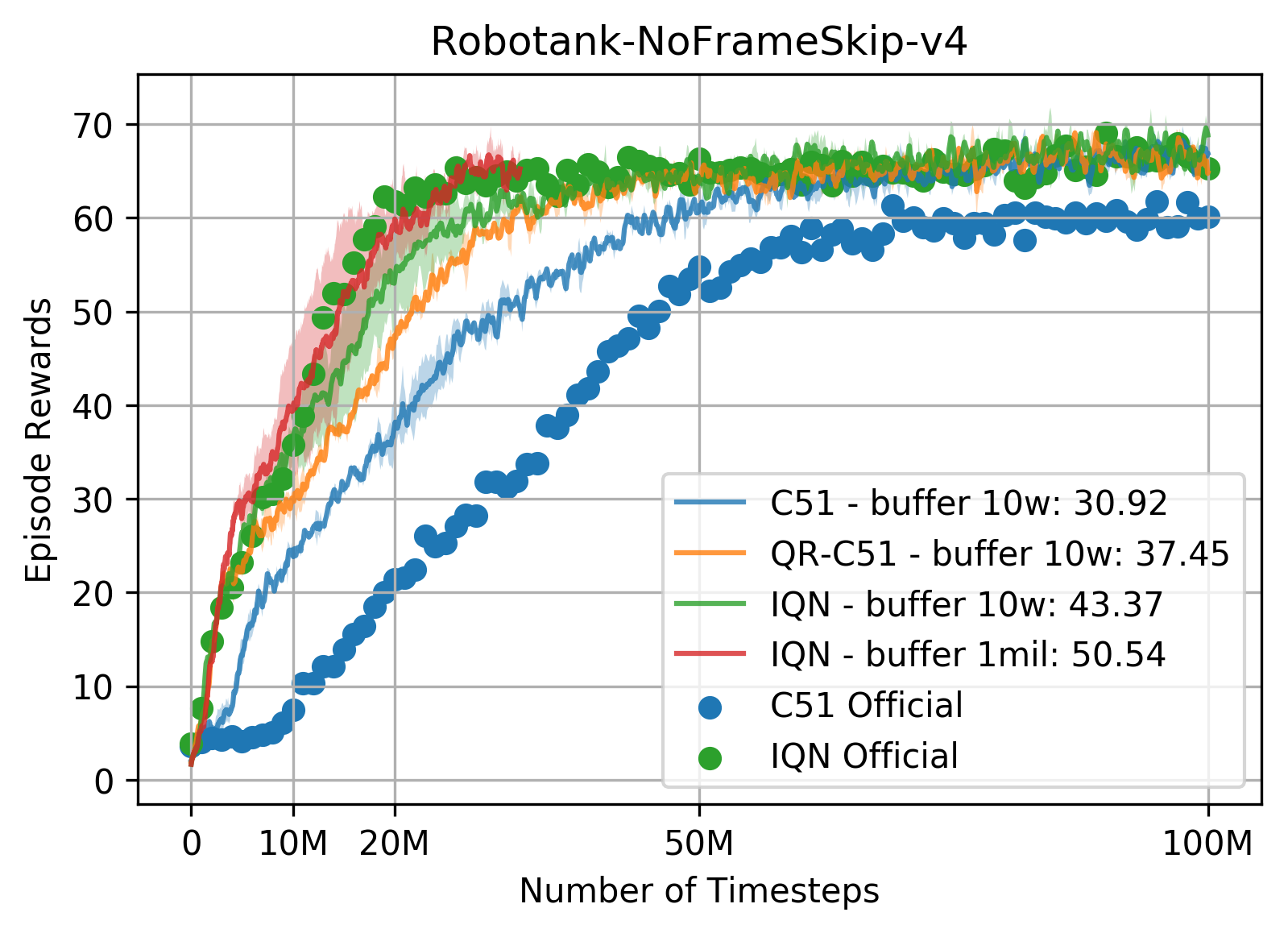Towards learning Rainbow-DQN and all that good stuffs in pytorch.
Run the codes with
time ./runIt.sh
A few notes (Bug might exist):
-
Testing results for 10M is shown in Figure 1.
The comparisons are for "DDQN + C51", "DDQN + QR-C200" and "DDQN + IQN-64-64-32".
-
Rainbow in this repo runs kinda slow on my machine (TITAN Xp with Intel(R) Xeon(R) CPU E5-2650 v4 @ 2.20GHz). It only reached 75 FPS when using a prioritized memory of size 50,000 on the game Spaceinvaders, so it seems that it may not be able to finish 200M within 10 days. (Could be because of the sub-optimal way that is used for pushing new transitions into the PER buffer.)
-
The result inconsistency (shown by the following figures) w.r.t. the Google Dopamine implementation mainly comes from the fact that we use V4 environments while the reported results by Google Dopamine utilize V0 environments with "sticky" actions.
Useful references:
[0] IQN implementation reference: https://github.com/google/dopamine/tree/master/dopamine
[1] Very helpful pytorch code base: https://github.com/qfettes/DeepRL-Tutorials
[2] Tutorial on C51 https://mtomassoli.github.io/2017/12/08/distributional_rl/
[3] Hyperparam of target interval: lower might be better: https://www.noob-programmer.com/openai-retro-contest/how-to-score-6k-in-leaderboard/
[4] APX-DPG: something better than rainbow: https://arxiv.org/pdf/1803.00933.pdf


